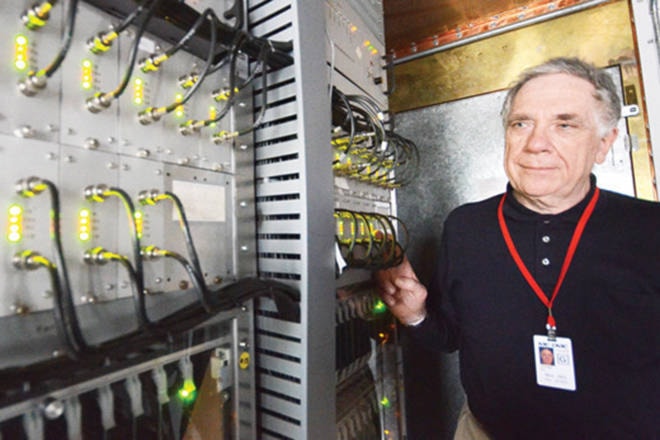Today, the main thrust of astronomy is aimed at understanding something of how the universe works and how it came to be as we see it.
Not that long ago, its primary function was completely different. For much of history, astronomy was about navigation and time-keeping.
Navigating on land has never been much of a problem, because there are landmarks, and they don91������Ƶ�t move. When our ancestors pushed off-shore into the ocean, the situation was very different. In general, navigation meant following the coast. If you got out of sight of land, you could be in serious trouble. Something better was needed.
One of the first navigation aids was the Pole Star, or the North Star. At the North Pole it is overhead, hence its name the 91������Ƶ�Pole Star.91������Ƶ� Its astronomical name is Polaris. For navigation, when we are looking at Polaris we are looking north, hence the star also being called the North Star. In addition to telling us which way is north, Polaris can also tell us our latitude. It is simply equal to the angle between the star and the northern horizon.
This is useful. Say we are sailing from London to Montreal, and we want to sail up the St. Lawrence. The opening to the St. Lawrence is at a latitude of about 47 degrees north, and London lies at 51 degrees north. We sail east from London, out of the Thames Estuary, and head south. We then sail a bit south of west until Polaris is 47 degrees above the northern horizon. All the way across the Atlantic we try to keep the Pole Star at that angle.
However, with contrary winds, ocean currents and so on, we have next to no idea how far west we are. When we think we are getting close to our destination we have to keep a close eye ahead, slow down and be very circumspect about sailing at night. Our coasts are littered with wrecks where ships reached their destination earlier than expected. We need to know our longitude.
When the French and British were the main maritime trading nations, both realized the great need to be able to measure longitude. The French built an observatory in Paris, and set up a zero degree longitude line passing through it. There are markers in the Paris sidewalks showing this line, which passes quite close to the Louvre. They are brass discs bearing the name Arago, after Francois Arago, who set up that precise line. The British built an observatory at Greenwich, on the East edge of London, and defined the Greenwich Meridian, also for use as a zero longitude line. As more nations got involved in an increasing volume of maritime trade, it was realized we should confine ourselves to one agreed longitude system. Greenwich was chosen. Today the observatory is a museum, and every day the courtyard is filled with tourists having their pictures taken while they straddle the line separating the Eastern Hemisphere and Western Hemisphere.
However, knowing the longitude of our destination is only part of the issue; we need to know our ship91������Ƶ�s longitude. There were some rather obscure astronomical methods to do this. However, it was not until 18th Century clock maker John Harrison developed a clock that remained accurate while spending weeks or more on a rocking ship. This was set to the time at Greenwich, which later became known as Greenwich Mean Time, and then evolved into Universal Time.
Once we have an accurate clock the rest is simple. Through observations of the sun or other celestial objects we determine the local time. Assume it is 10:45 a.m. Our clock tells us that it is 2:45 p.m. in Greenwich. So our local time lags Greenwich Time by four hours. Since the Earth turns at 15 degrees an hour, we are 4x15 = 60 degrees west of Greenwich, and at the mouth of the St Lawrence 91������Ƶ� hopefully.
Venus is spectacular in the east before dawn. Jupiter lies in the southwest after dark and Saturn low in the south. The moon will be full on July 8.
Ken Tapping is an astronomer with the NRC91������Ƶ�s Dominion Radio Astrophysical Observatory, Penticton.



